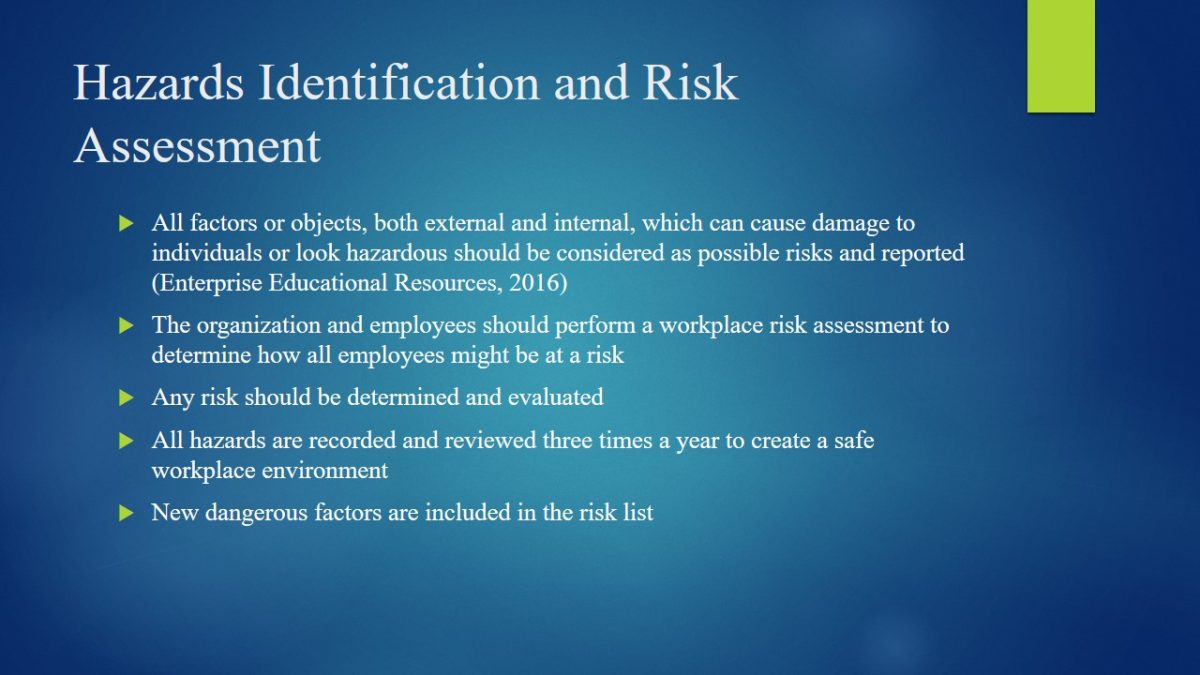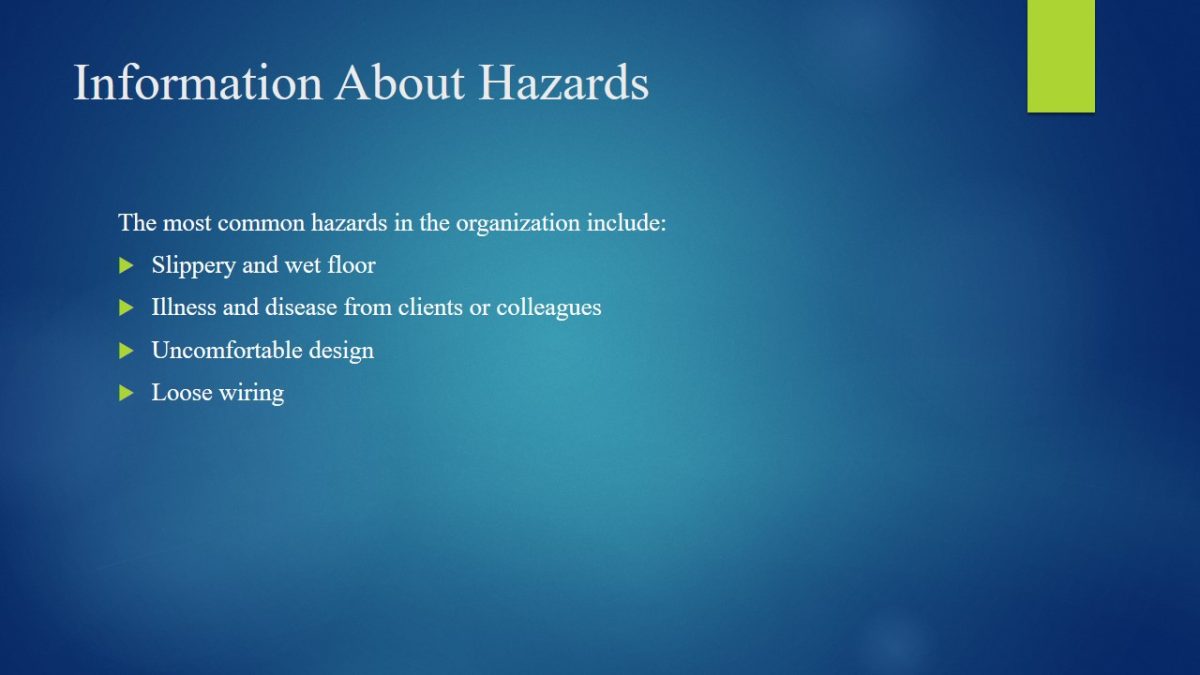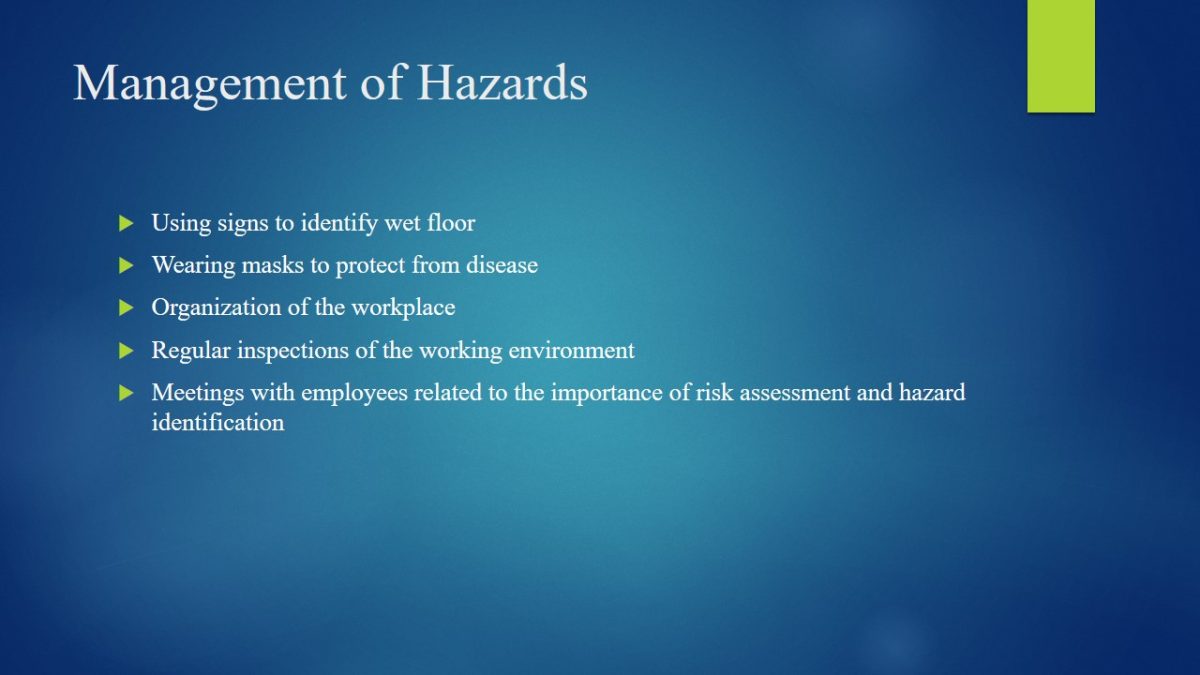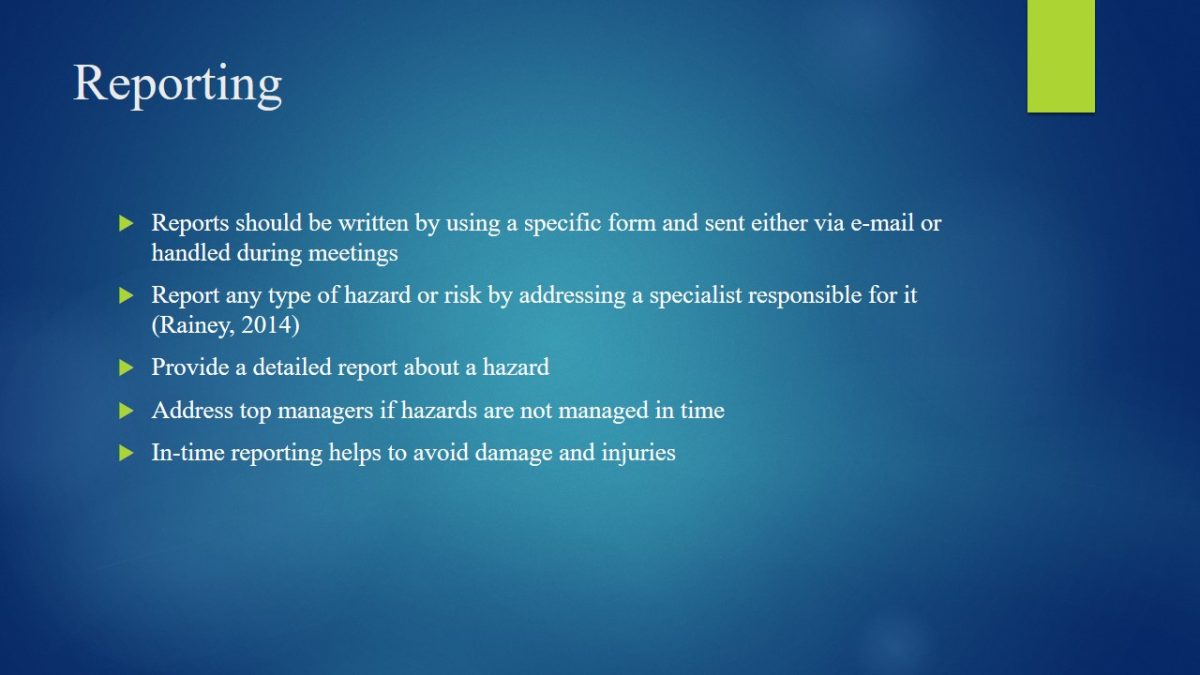Hazards Identification and Risk Assessment
- All factors or objects, both external and internal, which can cause damage to individuals or look hazardous should be considered as possible risks and reported (Enterprise Educational Resources, 2016).
- The organization and employees should perform a workplace risk assessment to determine how all employees might be at a risk.
- Any risk should be determined and evaluated.
- All hazards are recorded and reviewed three times a year to create a safe workplace environment.
- New dangerous factors are included in the risk list.

Information About Hazards
The most common hazards in the organization include:
- Slippery and wet floor.
- Illness and disease from clients or colleagues.
- Uncomfortable design.
- Loose wiring.

Management of Hazards
- Using signs to identify wet floor.
- Wearing masks to protect from disease.
- Organization of the workplace.
- Regular inspections of the working environment.
- Meetings with employees related to the importance of risk assessment and hazard identification.

WHS Policies
- The company has a specialist responsible for WHS.
- He/she should be provided with reports regarding all possible hazards.
- The organization demands all employees to adhere to the standards of WHS formulated by it.
- The damage caused to specialists will be compensated unless the rude violation of existing rules is detected (Hopkin, 2018).
- The disregard of any possible risk factor or hazard and non-reporting is unaccepted and presupposes penalties.
- Employees are free to make suggestions regarding the WHS Policies improvement.

Reporting
- Reports should be written by using a specific form and sent either via e-mail or handled during meetings.
- Report any type of hazard or risk by addressing a specialist responsible for it (Rainey, 2014).
- Provide a detailed report about a hazard.
- Address top managers if hazards are not managed in time.
- In-time reporting helps to avoid damage and injuries.

References
Enterprise Educational Resources. (2016). BSBWHS401 Implement and monitor WHS policies, procedures and programs to meet legislative requirements. Enterprise Educational Resources.
Hopkin, P. (2018). Fundamentals of risk management: Understanding, evaluating and implementing effective risk management (5th ed.). Kogan Page.
Rainey, H. (2014). Understanding and managing public organizations (5th ed.). Jossey-Bass.